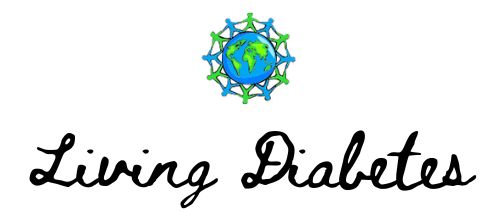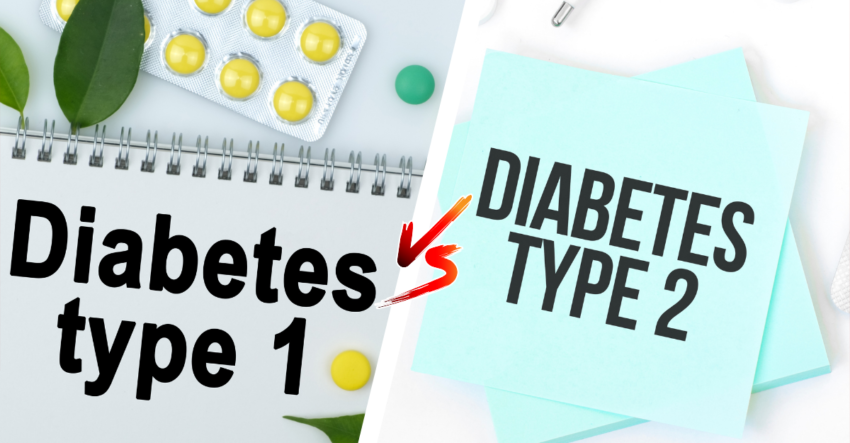Introduction: Exploring the Landscape of Diabetes
Diabetes isn’t just one condition but a complex group of diseases with various causes. People with diabetes have high blood glucose levels caused by problems with insulin production or function. While there are several types of diabetes, Type 1 and Type 2 are the most common, and understanding the nuances between them is critical for effective management and care.
Part 1: Type 1 Diabetes – An Autoimmune Battle
What is Type 1 Diabetes?
Type 1 diabetes is an autoimmune condition where the body’s immune system mistakenly destroys the insulin-producing cells in the pancreas. This means that people with Type 1 diabetes produce very little or no insulin, which is essential for transporting glucose from the bloodstream into the cells.
Symptoms of Type 1 Diabetes
The symptoms of Type 1 diabetes typically develop suddenly and can rapidly become severe. They may include extreme thirst, frequent urination, sudden weight loss, fatigue, and blurred vision. It’s important to recognize these symptoms early, as Type 1 diabetes can quickly lead to dangerous health conditions if not treated promptly.
Type 1 Diabetes Management
Managing Type 1 diabetes is a careful balance of insulin therapy, diet, and exercise. People with Type 1 diabetes must take insulin every day, either through injections or an insulin pump. Regular blood glucose monitoring is vital to ensure that glucose levels remain within a target range. Additionally, understanding carbohydrate intake and how it affects blood sugar is crucial for day-to-day management.
Part 2: Type 2 Diabetes – A Lifestyle Epidemic
Understanding Type 2 Diabetes
Type 2 diabetes develops when the body becomes resistant to insulin or when the pancreas is unable to produce enough insulin. This type is often associated with lifestyle factors such as poor diet, physical inactivity, and being overweight, but genetics and environmental factors also play a role.
Recognizing Type 2 Symptoms
Symptoms of Type 2 diabetes often develop more gradually than those of Type 1 and can be subtle enough to go unnoticed. They include increased thirst and urination, increased hunger, fatigue, blurred vision, and, in some cases, numbness or tingling in the hands or feet.
Strategies for Type 2 Management
Lifestyle modifications are the cornerstone of managing Type 2 diabetes. This includes adopting a healthy diet that’s rich in nutrients, low in fat and calories, and focused on regular physical activity to maintain a healthy weight. In some cases, people with Type 2 diabetes may also need diabetes medications or insulin therapy.
Part 3: Comparing and Contrasting Type 1 and Type 2 Diabetes
Both types of diabetes can lead to chronically high blood sugar levels, which increase the risk of diabetes complications. But the similarities end there, as each type of diabetes has different causes, symptoms, and treatments. Here’s a detailed comparison:
| Aspect | Type 1 Diabetes | Type 2 Diabetes |
|---|---|---|
| Cause | Immune system attack on beta cells | Insulin resistance, decreased insulin production |
| Onset | Typically rapid and at a younger age | Gradually, often in adults over 40 but increasing in youth |
| Symptoms | Usually severe and acute | Often mild and not noticed immediately |
| Insulin Production | Little to none, requires insulin therapy | Varies, might be normal, decreased or increased |
| Treatment | Insulin injections/pumps, carbohydrate counting | Lifestyle changes, oral medications, sometimes insulin |
| Body Weight | Often normal or underweight before diagnosis | Often overweight or obese at diagnosis |
| Risk Factors | Genetic predisposition, environmental triggers | Overweight, inactivity, family history, age |
Daily Life with Type 1 Diabetes
Managing Type 1 diabetes is a 24/7 task that includes constant vigilance over blood sugar levels, counting carbohydrates at every meal, and maintaining a balance between food intake and insulin. It also involves recognizing and treating low blood sugar, known as hypoglycemia, which can be a side effect of insulin usage.
Navigating Life with Type 2 Diabetes
For Type 2 diabetes, the focus is on controlling blood sugar levels through lifestyle changes, which can have profound health benefits and may even result in remission of the disease. Regular monitoring of blood sugar levels is crucial, and for some, taking medication as prescribed to help the body’s insulin work more effectively.
Frequently Asked Questions
FAQs on Type 1 Diabetes
Can Type 1 Diabetes be prevented? Currently, there is no known way to prevent Type 1 diabetes, but ongoing research is focused on the
prevention and understanding of autoimmune triggers.
How do I manage Type 1 Diabetes on a daily basis? Daily management of Type 1 diabetes involves:
- Monitoring blood glucose levels several times a day.
- Administering insulin through injections or a pump.
- Counting carbohydrates to ensure proper insulin dosage.
- Adjusting insulin for exercise, stress, and illness.
- Regular check-ups with your healthcare team.
FAQs on Type 2 Diabetes
Is Type 2 Diabetes reversible? While Type 2 diabetes is considered a chronic condition, some individuals can achieve blood sugar normalization, often referred to as remission, through:
- Significant weight loss and maintenance.
- Intensive lifestyle changes, including diet and exercise.
- Ongoing monitoring and support from a healthcare team.
What lifestyle changes are most effective for managing Type 2 Diabetes? Effective lifestyle changes include:
- Adopting a healthy, nutrient-rich diet low in refined sugars and saturated fats.
- Engaging in regular physical activity.
- Maintaining a healthy weight.
- Quitting smoking, as it can increase insulin resistance.
- Regularly monitoring blood glucose levels.
General Diabetes FAQs
How can I tell if I have Type 1 or Type 2 Diabetes? Type of diabetes is determined by a healthcare provider through a combination of blood tests, clinical symptoms, and sometimes autoantibody tests.
What are the complications associated with unmanaged diabetes? Unmanaged diabetes can lead to serious health complications, including:
- Heart disease and stroke.
- Nerve damage (neuropathy).
- Kidney damage (nephropathy).
- Eye damage (retinopathy).
- Foot damage, potentially leading to amputation.
- Skin conditions, including bacterial and fungal infections.
Conclusion: Empowering Yourself in the Face of Diabetes
Understanding the nuances between Type 1 and Type 2 diabetes can feel overwhelming, but it’s a crucial step in taking control of your health. With proper management and support, individuals with diabetes can lead full, active lives. Embrace education, build a supportive care team, and connect with the diabetes community for shared experiences and advice. Remember, each step you take is a stride towards a healthier you.

